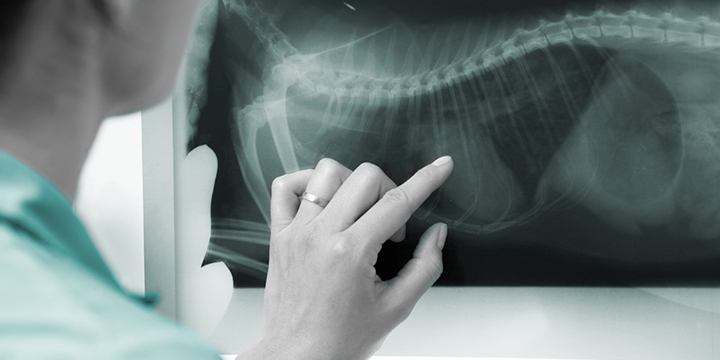
Diagnostics

Diagnostics
Unlike us humans, pets are unable to tell us where it hurts, what happened, or how they are feeling.
While veterinarians are very good at using other physical and behavioural indicators to help identify illness in pets, often further tests are required to provide a diagnosis and guide specific treatment recommendations.
Our clinics are equipped with top-of-the-line diagnostic equipment to provide timely, reliable results that enable our veterinarians to give your pet the personalised care they need.
Read our Frequently Asked Questions below to find out more about the most common diagnostics we use at our Animates Vetcare clinics.
Frequently Asked Questions for Diagnostics
Why would my pet need a blood test?
Blood tests are extremely helpful tests that can give your veterinarian information about the function of your pet’s internal organs, their immune system, whether your pet has a certain disease and how that disease is affecting their body.
Blood tests are often used to identify potential health issues before anaesthetics are used, to screen for diseases or for monitoring the effects of specific drug treatments.
Blood tests can identify some health conditions that could be affecting your pet, before they are showing any symptoms. This can lead to early detection of these conditions, allowing your veterinarian to begin treatment earlier and your pet to feel better sooner.
There are many reasons why your pet may need a blood test, and a huge range of different tests available. Your veterinarian will discuss which are the most appropriate for your pet’s circumstances.
What do blood tests reveal?
The most common tests look at the function of the liver, kidneys, and pancreas. Enzymes can be tested which can indicate potential muscle damage and inflammation. Red and white blood cell levels can also be assessed to give your veterinarian information on your pet’s hydration status, anaemia, inflammation, infection, and immune system responses.
How often should pets have a blood test?
This will depend on the age and diseases or conditions that your pet has. It is recommended that a blood test be done before any general anaesthetic as this helps identify any underlying problems that can then be managed appropriately.
As pets get older and start to experience age related problems, a yearly blood test is recommended. This enables conditions or diseases to be detected in the early stages, allowing earlier intervention or preventative measures to be taken to slow the progress of disease, or stop it developing altogether.
How are blood tests performed?
Depending on the test required, the blood test can either be taken during a regular consultation, or your pet may need to be admitted into the hospital for the day if a series of tests at certain times are required. Your veterinarian will be able to give you information specific to your pet’s situation.
Your pet will have a small amount of hair clipped from one of their front legs, or from their neck, before the area is sterilised with an alcohol swab. Using a syringe and needle, a small amount of blood is collected and then transferred into special tubes. This is then either processed in-house in our blood analysis machines or sent to an external laboratory.
Our in-house laboratory equipment can provide accurate, rapid results which is especially important in sick pets and those requiring immediate or emergency treatment. For specialised tests needing to be sent out to an external veterinary laboratory the results can take a bit longer to receive. Your veterinary team will inform you of the results when they are available.
Why would my pet need an x-ray?
Radiographs (x-rays) allow vets a non-invasive way to see what is happening inside your pet. X-rays can give us information about bones and soft-tissue structures.
Common conditions they are useful for diagnosing and monitoring include:
Bones
Fractures or broken bones – the initial problem and monitoring how they are healing after surgery
Osteoarthritis
Problems with the spine
Dislocations
Bone cancer
Dental health, especially the roots of teeth
Soft Tissue Structures
Changes in heart size
Chest or lung conditions like asthma or pneumonia
Some cancers
Foreign bodies in the stomach or intestines
Kidney disease
Bladder stones
Constipation
What happens to my pet when they have an x-ray?
Most pets will be admitted into the hospital for the whole day to have x-rays taken. At the previous appointment or when booking the procedure, the veterinary team will have discussed how to prepare your pet for x-ray day, including when your pet should have their last meal. In emergency situations, the x-ray will be taken as soon as possible.
Pets will be given a light sedative or general anaesthesia to ensure they are calm and comfortable, before being positioned on the radiograph table to get the best images of the area of concern.
Our clinics have safe, high-quality radiograph equipment, including x-ray machines, automatic processors, and radiograph viewers. Once the x-ray has been taken it will be processed in-clinic and assessed by the veterinarian who will determine the diagnosis and recommend a treatment plan.
Why would my pet need an ultrasound?
An ultrasound allows a veterinarian to see your pet’s internal organs and determine their size, texture and structure, which can assist in diagnosing disease. Ultrasound is often used for assessing the liver, kidneys, bowel, spleen, bladder, prostate, uterus, heart and for pregnancy diagnosis.
Ultrasound can also be used to help guide biopsies of internal organs, allowing the collection of tissue samples without having to do a large abdominal surgery.
What happens to my pet when they have an ultrasound?
During an ultrasound procedure there is minimal discomfort to your pet. In some cases, pets may need sedation or general anaesthesia to allow for a detailed examination to be done.
Your pet will usually lay on their side on a table and be supported by the veterinary team. Some hair may need to be clipped from the area of examination, and an ultrasound gel will be applied between the ultrasound transducer and your pet’s skin. The veterinarian will then do a thorough examination of the area, before drying the gel off your pet, determining a diagnosis and developing a treatment plan.